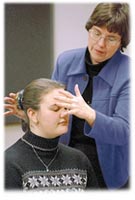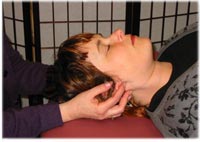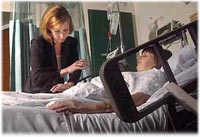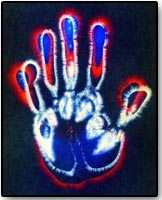Three tips for getting moving in the spring
Springtime marks the end of winter hibernation. Like so many others, you may feel the need to get out of the house and start moving. Start the season right with these tips.
Start slowly and gradually
Spring is the time to recondition our bodies for outdoor activities. Whether it’s baseball, running or yard work, you may wake up one Saturday, feeling ready to go. But it is easy to get injured if you move too fast!
Warm up
Starting slowly and gradually before brisk activity can really pay off. Go outside and march in place for five minutes or take a quick walk around the block. Then gently stretch your neck, arms and legs.
Play smarter, not harder
As you begin your gardening or engaging in your sport, focus on using your body “smarter, not harder.” Switch activities every 30 minutes so you are not using the same muscles for extended periods. Take regular rest breaks and stretch the muscles you’ve been using.
Ramping up your outdoor activities carefully will give your body time to adjust and could prevent soreness and even injury.
Avoiding Tendinitis
Tendinitis can affect everyone from tennis players and golfers to warehouse and office workers. Known for painful inflammation (“itis” refers to inflammation), scarring of tendons, swelling, and a feeling of weakness, tendinitis inhibits proper muscle function.
Muscles form a part of our body’s locomotor system. They serve to provide movement and stability of our skeleton and internal organs. The tendon is the tissue at the end of the muscle that connects to the bone.
Common areas of pain
Tendinitis is sometimes confused with or occurs with a condition called “tendonosis,” a degenerative condition of the tendon, which also causes pain and dysfunction. The most common sites for both are the shoulder, arms, hip, hamstrings and the Achilles tendon. You may experience pain at the site of the injury or pain can be referred, or radiated, to areas distant from the injury.
The role of repetitive actions
Through repeated microtrauma, tendons can develop tiny scars. Repetitive strain injuries (RSI’s) develop from repeated movements and are characterized by pain, stiffness and tissue scarring. They often involve tendons that cannot adapt to forces placed upon them. Unless you’ve suddenly whacked your tendon, pain and dysfunction usually occur gradually through repeated trauma to the tendon. A thorough assessment will help determine the cause of your specific problem.
Massage therapy for tendon injuries
Massage is very effective in treating both acute and chronic tendon conditions. Massage therapists draw from an extensive background in clinical anatomy, and hands-on assessment and treatment skills. For tendon injuries, people often find short, regular visits reduce recovery time.
Why massage?
Massage relaxes and lengthens muscle groups in the area of injury and dysfunction. In addition, transverse or cross-fiber friction massage is often used on the area of the specific tendinitis, followed by ice. Massage also helps to ensure that the joint areas above and below the injury site (where applicable) stay relaxed and mobile.
Warm and cold applications
Massage therapists often use hydrotherapy in addition to massage. When inflammation is present, ice may be applied as a natural pain reliever. After the major inflammation winds down, contrast hydrotherapy is often used to improve circulation to the injury site. This means that warm and cool applications are applied alternately on the area, several times each of warm and cool, ending with cool.
Finally, after a few weeks brief heat applications may be used, unless there is a flare-up of symptoms, in which case ice may again be applied. If your tendon is painful after work or exercise, you can use ice at home, following your therapist’s guidelines, to reduce the body’s inflammation response and relieve pain.
What is Ayurvedic Massage?
Ayurvedic massage or "Abyhanga" is a full body warm oil massage. Each massage is designed to relieve muscular stress, reduce muscular pain, move lymph and circulation, remove energy blocks and promote balance between body, mind and spirit.
Accumulated stress and toxins in the mind and body dissolve during the ayurvedic massage. A full-body warm oil massage therefore acts as a powerful recharger and rejuvenator of mind and body.
This is a wonderful way to get ready for spring and help detoxify the body after a long winter.
.jpg)











.jpg)

.jpg)

.jpg)
.jpg)